Let There Be Lights
Austin, Texas is home to High End Systems, Inc. They design, manufacture and distribute lighting systems used worldwide in the entertainment industry and for architectural applications.
Share





Austin, Texas is home to High End Systems, Inc. They design, manufacture and distribute lighting systems used worldwide in the entertainment industry and for architectural applications. The list of customers for their entertainment industry lights reads like a Who's Who of stage and screen.
Most of us take the lighting used as part of concerts and stage plays for granted. Actually though, it's a very important aspect of any presentation. Lighting designers create effects that complement activities of the performing artists in ways both subtle and dramatic.
Our interest, however, is in the manufacture of High End Systems' lighting products. In spite of the lure of showbiz glitz that surrounds this company, we're concentrating on High End's fab shop and how they use it to make their lights. Well, one small indulgence—in the 1996 touring season, High End lit performances by AC/DC, Alanis Morissette, Barry White, Foreigner, Peter Frampton, REO Speedwagon, Steve Miller Band and ZZ TOP, to name just a few.
Research Driven
Because the lighting industry has been around for more than one hundred years, one might think that it is a fairly mature and developed industry. Of course, many feel that metalworking is also a mature industry. Actually neither has stood still, despite the long histories of both.
In the entertainment lighting industry, where High End Systems dwells, research is a primary driver. According to David Hansen, High End's fab shop manager, the company's leadership position comes from the research lab. R&D occupies one of several buildings on the company's sprawling Austin campus, where they employ more than 300 people.
High End's business is very competitive. Getting to the market first, with new innovations, means the bands and theater troupes will take your products on tour instead of your competitor's. It's a very "top this if you can" kind of atmosphere.
Lighting innovations come in several ways, some of which come through the use of special effects called gobos, lithos and custom lithos. Arranged in rotary wheels, each light can project various effects including logos, patterns and textures, singly or in combinations. The electromechanical functionality of these lights, which is necessary to deliver the various effects, requires a steady stream of product refinement.
According to Mr. Hansen, "these lights are sophisticated mechanisms with micro-circuitry, servodrives, ballscrews and programmability. Running the lighting for a show is much like executing a CNC program on one of our machine tools. The right thing must happen at the right time or you've wrecked the performance—or the machine."
Getting ideas from R&D to prototype and testing is a much more streamlined process today for High End Systems. Since setting up a captive fab shop, they've managed to reduce turnaround for prototype work from one or more weeks to, in many cases, a few hours.
Do It Yourself
High End Systems started making lights in 1986. From that time until 1995, they vended out their metalwork to various shops in and around Austin. The business grew rapidly and in that same year the decision was made to begin the process of pulling work in-house.
Initially, the motivation for establishing in-house metal fabricating capability was to deliver prototypes to the research teams in a more timely manner. "Sometimes," recalls Mr. Hansen, "they might need a simple bracket, some holes machined or other relatively simple operation performed. So our main motive for setting up our own fab shop was to reduce the response time for our R&D activities," says Mr. Hansen. "In the process, we've found some other benefits as well."
As prototype response became more routine, the shop looked to producing a selected few outsourced parts that had traditionally caused problems. These problems generally centered around consistent quality and timely delivery.
The company's first metal fabrication machine tool purchase was a combination laser punch press. Charles Johnson, director of materials for High End, believed it was an ideal machine for prototyping and then short production runs with standard tooling when the part design was firmed. Says Mr. Hansen, "It seemed this type of machine tool was made specifically for what we needed to do."
Tooling Up
Acquisition of the laser punch press was followed quickly by purchase of a CNC vertical machining center. Suddenly, High End Systems was in the metal fabrication business.
Once on line, the laser punch press immediately reduced the time needed to get prototype requests and modifications from an R&D engineer to the shop and back. The next machine tool investment was a press brake. Capability to not only cut sheet metal but to also shape it into usable parts put the fab shop on a 30 percent per year growth curve, which it maintains today.
Expanding Role
"As we grew our shop's manufacturing capability," says Mr. Hansen, "its role in the company's operation also grew. Now, in addition to supporting R&D activities, we are involved in quality control for production of problematic parts and support of new products. We select the parts that make good business sense to make ourselves."
High End recently installed two Amada Vipros turret punch presses. These newest machines are serviced by an automatic sheet delivery system.
The machine shop also has grown and now has a Bridgeport VMC in addition to the older Haas and a Clausing CNC turning center. The machine shop processes batches up to 400 parts per work order.
Two Shops In One
A quick look around High End's shop reveals they successfully employ lean manufacturing techniques by virtue of rapid throughput across their stable of new machine tools. "While there is some work in process, it turns very quickly," says Mr. Hansen. "On our assembly line we use one-piece flow production." That means they start a production schedule and process work through various operations, until it is ready for subassembly or assembly into the company's lighting fixtures and then for shipment.
Most of the material that runs through the shop is aluminum. They process extrusions and sheet through the fab and machine shops. Mr. Hansen says that about 80 percent of the raw stock used in the shop is sheet aluminum measuring 0.032 to 0.125 inch thick. They order sheet metal pre-cut from the supplier, which eliminates the need for a shear.
The production end of the shop is built around the two Vipros turret punch presses. Both machines are full CNC and receive their part programs from a production control file server. Part designs are created using Pro Engineer and downloaded to the machine through Amada's CAM and nesting package, which helps optimize use of the sheet. Operators can mix and match the job sequence to get the best efficiencies from a sheet.
"We use these dedicated punch presses to run jobs that are proven and are of sufficient quantities for which to have hard tooling made," says Mr. Hansen. "The sheet delivery system on our newest punch presses allows us to load up several sizes of sheet and therefore quickly change from job to job. Quick changeover is key to throughput since we are, in effect, a captive job shop."
The laser punch press, on the other hand, is used quite differently in High End's manufacturing strategy. It gets an average of five to ten jobs a day. On top of these, "usually five or six hot jobs a day come from R&D, requiring us to drop what we're doing to process them," says Mr. Hansen. "That's where the flexibility of the combination laser punch machine really helps us out. It takes no more than 15 to 20 minutes to set up from one job to the next and therefore we can give almost immediate response to the prototype work generated for us by the research group."
Moreover, when the laser punch press isn't running a one-off or design modification, it's used to produce parts for newly designed products. "We do our volume production prove-out on this machine," says Mr. Hansen. "Quick setup lets us easily slip in the R&D work as it comes in with little or no disruption of our production schedule. And, we get accuracy of ±0.005 inch on this machine."
For High End the combination laser punch press is a key process development tool for later higher volume production. For example, a new part for one of the company's continuously evolving products is designed by R&D. It hits the fab shop as a prototype and usually undergoes several modifications before a final design is decided upon.
"We use the 58-tool capacity of the turret on this combination machine to store standard tools for punching, nibbling and other common fabrication cuts," says Mr. Hansen. "The laser lets us quickly perform operations that are beyond the range of standard tools. We get the best of both—fast cut punching for normal geometric configurations and the infinite variety of programmable shapes afforded by the laser."
In operation, laser machines are sensitive to highly reflective materials and the flash caused by the initial piercing needed to start a cut. Reflection can be reduced by spraying on a dulling compound while the flashback requires periodic cleaning of the laser's optics.
Combination laser/punch press operator Dave Rosolowski has run lasers for several years. "We have a case of dulling spray in a back room and have never needed it," he says. "A combination machine solves workpiece reflection and material flashback by using a punch tool to make a start hole for the laser beam. Once the beam's in the cut, both problems go away."
When not making prototypes, the combo machine runs initial quantities of newer jobs that are further down the development pipeline to first make sure it's right from a design and manufacturability perspective. As sales of the new product increase, production quantities consequently go up. It is then that investment in hard tooling is made and the job moves from the combination machine to the punch presses to more economically run the higher volumes.
"We realized early on," says Mr. Hansen, "that for our applications, the combination machine is best used for prototyping and production prove-out. For us, it's not the best tool for production runs. However, the way we use these two machine concepts together helps us maintain quality, quantity and flexibility."
Open Channels
Various engineering groups within the company work directly with Mr. Rosolowski and other operators in this shop. "We have success," says Mr. Hansen, "because of communication among the various groups in our company. We try to hire experience, at a good wage, and provide channels for professional growth."
Personnel stability is a key to maintaining the company's operating system because it's based on internal relationships—people working together. "Communication among the operators themselves and their internal customers is a strength we've cultivated since creating our fab shop," says Mr. Hansen. "Keeping our people engaged is key to keeping our people. Keeping our people is key to keeping our shop moving forward."
Related Content
Facilitating Lean Manufacturing Through Modularity
Knowing how to subdivide machines and jobs has enabled Danobat to create a lean manufacturing process that improves its lead times by up to 25%.
Read MoreInverting Turning and Five-Axis Milling at Famar
Automation is only the tip of the iceberg for Famar, which also provides multitasking options for its vertical lathes and horizontal five-axis machine tools.
Read MoreOkuma Demonstrates Different Perspectives on Automation
Several machine tools featured at Okuma’s 2023 Technology Showcase included different forms automation, from robots to gantry loaders to pallet changers.
Read MoreSecond B-Axis Improves Efficiency of Swiss-Type Machining
A highly stable, fully programmable B-axis on the subspindle of Nomura DS’s 20J3XBTC enables users to more quickly machine complex parts complete.
Read MoreRead Next
Registration Now Open for the Precision Machining Technology Show (PMTS) 2025
The precision machining industry’s premier event returns to Cleveland, OH, April 1-3.
Read MoreSetting Up the Building Blocks for a Digital Factory
Woodward Inc. spent over a year developing an API to connect machines to its digital factory. Caron Engineering’s MiConnect has cut most of this process while also granting the shop greater access to machine information.
Read MoreBuilding Out a Foundation for Student Machinists
Autodesk and Haas have teamed up to produce an introductory course for students that covers the basics of CAD, CAM and CNC while providing them with a portfolio part.
Read More













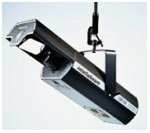
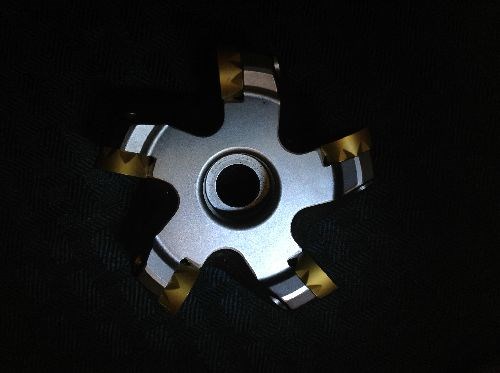
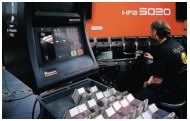

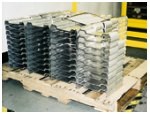
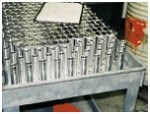








.jpg;maxWidth=300;quality=90)









